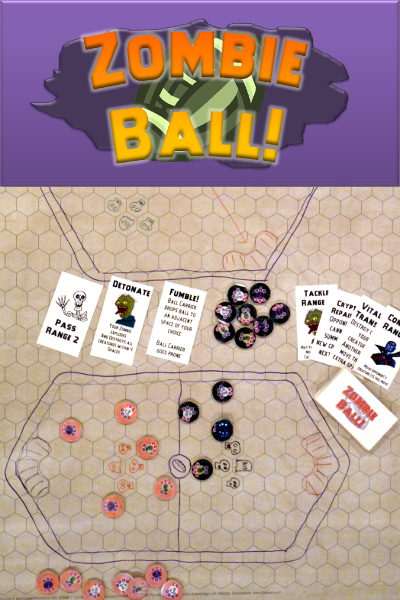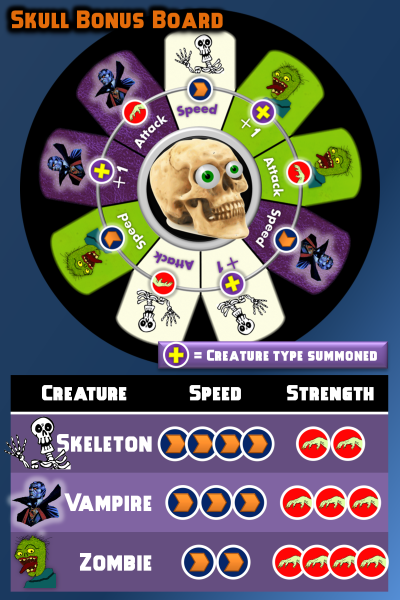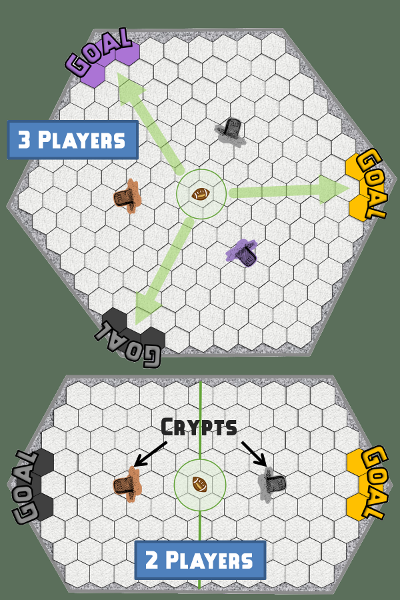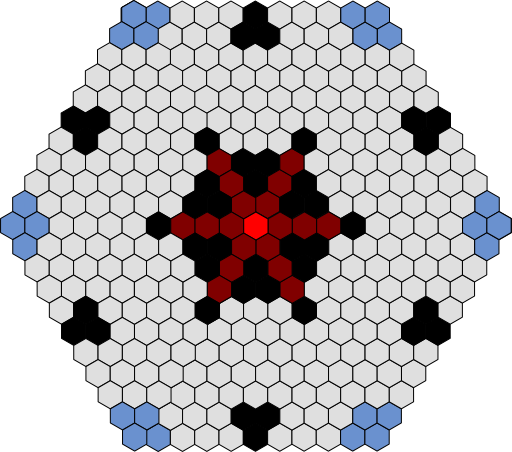October 2011 Game Design Showdown - "Rest In Peace"
Please Read: Details on entering the Game Design Showdown.
The votes are in, and we have a winner!
The October installment of the Game Design Showdown is now over.
This month we had 10 entrants, but only 7 voters. I think it would be cool (and maybe even more fair) if each entrant took the time to vote on the entries. Please keep that in mind - if you expect other participants to read and vote on your entry, do them the favor of reading and voting on theirs.
This month's winner, with 7 votes, is Graveyard Shift by Ilta (Isaiah Tanenbaum)! A close second, with 5 votes, is Zombie Ball by dobnarr (Dave Dobson).
Grave Spotting, Attack of the really long game title, Dorn Bones, and Bone Pile each received 4 votes. Good job everyone! The Critiques Thread is now open for business!
Main Design Requirements:
Theme (or Setting) Restriction: Final resting place (or... "Dying to get in").
In honor of Halloween, this month's games should be about or set in a final resting place - mortuaries, graveyards, catacombs, shallow graves, whatever you like.Mechanics Restriction: "Dorn tower" or "Mancala".
A neat mechanism I haven't seen used in a while is the "Dorn tower" - a mechanism used by Rudiger Dorn in several of his games: Genoa, Louis XIV and Goa to name a few. This mechanism is pretty similar to the main mechanism in Mancala. For a better description of this mechanism you may want to check out reviews of those games if you're not already familiar with them.
- Submissions: Saturday the 1st through Saturday the 8th.
- Voting: Through Saturday the 15th. PM your votes to sedjtroll.
- Voting Format: Each person has 6 votes to distribute any way they choose among the GDS entries with the following restrictions:
-
- You may not assign any votes to your own entry!
-
- You may not assign more than 3 votes to any single entry.
- You need not assign all 6 votes.
Comments or Questions: Comments and questions about this Challenge were handled on the Comments Thread.
- CRITIQUES: After voting has closed the entries will be posted for comments and critiques. Post constructive critiques and commentary about the entries to this Challenge in the Critiques Thread
- GDS Details: For more details on how these Game Design Showdown Challenges work, especially the details around the word count and graphics limits, visit the GDS Wiki Page.
Enjoy, and good luck!
-Seth










Charon’s quadrate lake
You all have just died at the same car accident. Your bodies will be buried on the local cemetery and your families mourn for you. But this is not the end. Your souls are drawn to some sort of a temporary place. You are wondering, what is it, does this look like heaven? “No, but you are very close” says a person appearing ahead of you. “Follow me into my ship, I’ll get you over the lake, if you pay well.” A lake appears. Well, it doesn’t look much like a lake, it’s a quadrate with 10x10 fields inside. And on the other end of the lake, there you would expect stairs to the heaven. But no, it’s an elevator. Charon is playing a game with your life.
Game parts
Game flow:
Preparing phase:
The quadrates (2x2) are laid randomly on the greater board, creating a colourful field. The ship is laid on one corner, in the other corner will be the elevator field (printed on one of the quadrates). Each player chooses a colour of the coloured tokens, takes an equal part of the uncoloured tokens and a card of a sin (for 3 players: two cards), looks at it and hides it.
Progressive phase:
Players are taking turns. In each turn, one player is made the captain, while the others do their bid on the adjacent fields (except the following one), meaning how much of their tokens are they willing to give the captain, if he/she moves the ship on that field. Then, the captain decides, where he would like to go and the players give him as many tokens as they have offered. The coloured tokens belong to the player and cannot be given, it’s just for counting. After the ship has moved, an arrow token is laid on the previous field, showing the way. Why to bid? If the ship steps on the field of your chosen sin (card), you fall into suffering, until it steps on it again. Then, your soul is free again. Exception: The sin of sloth has a grey colour. When entered, every bidding player changes his state to the opposite. Added rule: The Captain can each turn turn a single quadrate (except to those, where are the ship and the elevator) in one way, if he pays one of his coloured tokens, without a chance to use it anymore. This phase continues, until the ship gets to the elevator or until you run out of power (arrow tokens).
Repetitive phase:
The ship is laid back on the starting field and goes the way as arrows indicate, but now the cards are revealed and at each step is getting known, who fell into suffering or have escaped them. This can be counted with different sides of the coloured tokens.
Winning conditions:
Who is on the elevator field out of suffering and with most achievement tokens, wins the game. If the ship hasn’t reached the elevator, the game is lost for everyone. If all players are suffering at the end, again, there is no winner (Charon had fun and your destiny will be going to the hell, you have obviously sinned too much).